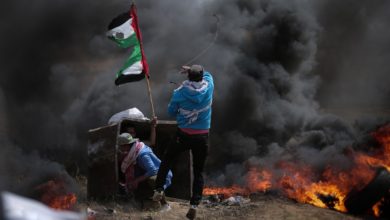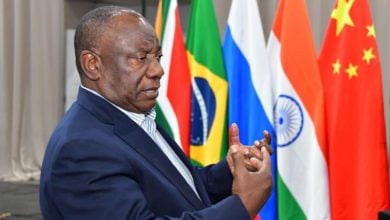Much speculation poured out through the ruling-class media over the significance of President Barack Obama’s handshake with Cuban President Raul Castro on Dec. 15 during Nelson Mandela’s funeral at Orlando Stadium in Soweto, South Africa.
While both had come formally for the same reason—to pay respects to a fallen leader—historically, the countries they represented had long been on opposite sides of the struggle against Apartheid.
The Cuban government and Cuban people, basing themselves on the principles of international solidarity, for decades served the cause of liberation in Africa, especially in the struggle against Apartheid. The U.S. government, by contrast, was the most stalwart supporter of the Apartheid regime and listed Mandela as a terrorist as late as 2008.
Cuba’s epic contributions to the African liberation struggles are left out of most histories, but are widely known throughout Africa, especially by those who fought on the front lines against white supremacy.
Just a year after being released from prison, on July 26, 1991, Nelson Mandela remarked: “The Cuban people hold a special place in the hearts of the people of Africa. The Cuban internationalists have made a contribution to African independence, freedom and justice unparalleled for its principled and selfless character.”
Medical assistance and ongoing solidarity
Although Cuba may be best remembered for its role in the military triumphs against Apartheid, the country also made it a top priority to assist newly independent African nations making efforts to overcome the legacy of underdevelopment. The colonial masters had stolen Africa’s wealth and left virtually no public health infrastructure behind. The Cuban people saw it as their duty as socialists to help correct this injustice.
Between 1963 and 2004, Cuba was involved in the launching of medical facilities in several African countries, including Ethiopia, Guinea Bissau, Uganda, Gambia and Equatorial Guinea. More than 30,000 Cuban medical technicians have worked in 33 African countries.
However, the largest intervention went to the revolutionary government of Angola that took power in 1975. By 1977, all but one of the 16 provinces in Angola had Cuban medical staff.
In support of armed struggle
Almost immediately after its 1959 triumph, the Cuban revolutionary leadership made connections with African liberation struggles.
In 1961, Cuba shipped weapons to Algeria’s National Liberation Front during its war against the French colonialists. In 1963, it responded immediately to the newly independent Algerian government’s request for support against an imperialist-backed war.
A group of Cuban volunteers, led by Che Guevara, joined the Simba guerrilla struggle in the Congo in 1965. While not officially representing the Cuban government, the guerrillas were militarily and politically backed by it. White South African mercenaries, in concert with Cuban exiles and the CIA, worked with the Congo National Army to thwart the Cuban mission.
Cuba assisted the African Party of Independence of Guinea and Cape Verde (PAIGC) under the leadership of Amilcar Cabral in the 1960s up until independence. Cuban combatants fought and died in Guinea Bissau in the late 1960s and early 1970s, assisting the well-trained PAIGC combatants in their victory over the Portuguese empire.
In 1977, when the revolutionary government of Ethiopia faced an imperialist-backed invasion from Somalia, Cuba, along with other socialist countries, sent military aid.
By 1981, 800 Cuban military advisers joined others in Mozambique to assist the popular socialist-oriented government. On the other side, Apartheid South Africa and the United States were channeling support to rebel groups to overthrow the government and install a puppet regime.
The Battle of Cuito Cuanavale
Despite shortages and a blockade at home, Cuba, with a population of only 10 million at the time, sent 300,000 troops to Angola over the course of more than a decade. They fought along with the Angolan army and Umkhonto we Sizwe, the armed wing of the African National Congress, against the CIA-funded armed groups and the South African invaders.
The war culminated in a pivotal battle in Cuito Cuanavale in southeastern Angola in 1987. It was the largest military battle on African soil since World War II and took place over a period of approximately six months. The battle ended in a crushing defeat of Apartheid forces in southern Africa and all the CIA-funded armies and mercenaries attacking the revolutionary government of Angola.
The Angolan government, under the leadership of President Agostinho Neto and the socialist Popular Movement for the Liberation of Angola, called this Angola’s “Second War of Liberation” after the victory over the Portuguese colonizers.
The victory at Cuito Cuanavale allowed the South West Africa People’s Organization to secure independence for Namibia—which was under South African rule. The Apartheid regime was forced to enter negotiations a few years after their defeat at the hands of the international revolutionary forces.
At Mandela’s funeral, Raul Castro made note of this historic victory cementing Cuba’s solidarity with African nations: “Cuba, a country born in the struggle for independence and for the abolition of slavery, and whose children have African blood running in their veins, has had the privilege of fighting and building alongside the African nations.”





